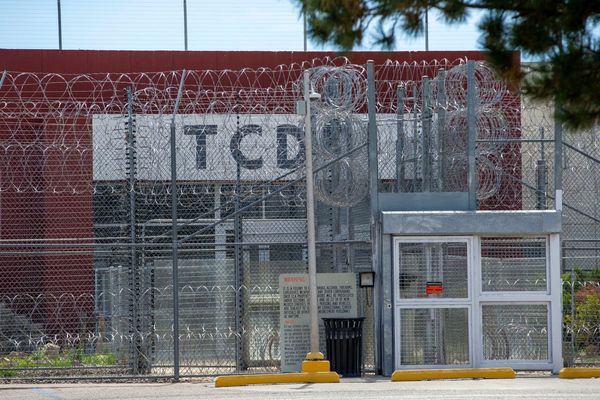
Bengaluru, India – When Bengaluru-based Ghanaian student Desmond Akwai misses his family in Accra, he gets on a video call with them over a meal, and they eat the exact same rice dish on both sides. “Because we’re all eating Indian rice, it feels like we’re sharing a meal, even though we’re so far apart,” the 23-year-old postgraduate student of commerce said.
It isn’t just Akwai’s family that comes together over Indian rice. By far the world’s largest exporter of the cereal, India is the single biggest source of rice both for wealthy Middle Eastern countries like Saudi Arabia and the United Arab Emirates, and for developing nations in West Africa like Ghana, Benin and Togo. China, which started importing rice from India only a few years ago, now counts the South Asian nation as its single biggest supplier.
Now, the food staple for more than half the planet could help India redeem itself after New Delhi’s ban on wheat exports last month sent shockwaves through the world at a time when the war in Ukraine has set off a global food crisis. The US Department of Agriculture estimates that both the production and demand for rice will touch new records globally this year. India too, experts said, is expected to witness both increased yields and greater consumption – unlike with wheat, where the recent harvest was significantly worse than predicted.
But the ban on wheat exports has left international food markets preparing the possibility of similar restrictions by India. The value of the country’s rice exports in May rose by more than 10 percent compared with a year earlier, driven in large part by those fears, said analysts. How India balances its domestic needs and its exports of rice could prove the difference between food security and hunger for millions of people around the world, they said.
“If India imposes serious restrictions on rice exports, it would be pretty devastating, especially for some of the poorest nations that depend on those imports,” Paul Dorosh, director of development strategy at the International Food Policy Research Institute, told Al Jazeera.
For the moment, there’s no need to worry about a potential export ban on rice, said Vinod Kaul, executive director of the All India Rice Exporters Association, the sector’s leading industry body. The last harvest was good, there are enough rice stocks in warehouses for the country’s vast subsidised food distribution system and the yield projections for the current season are promising, he said.
“We haven’t received any signal from the government that it plans to impose any restrictions on exports,” Kaul told Al Jazeera. “Why would India need such a ban?”
Food supplies less robust
Indeed, India’s rice stocks at the moment – 33 million metric tonnes – are the highest they’ve been at this time of the year since at least 2016, according to data from the Food Corporation of India (FCI), which procures food from farmers on behalf of the government for the public distribution system (PDS).
La Niña conditions – cool ocean surface temperatures in the eastern equatorial Pacific – are expected to prevail from June through September, India’s monsoon season. This should also help improve the country’s rice yield, said Kelly Goughary, a senior research analyst at Gro Intelligence, a US agriculture consulting group. India had produced a record 129.7 million metric tonnes of rice last year, also under La Niña, she said.
But India’s food supplies look less robust when the sharp fall in wheat production this year – which prompted the export ban – is taken into account. Together, rice and wheat stocks with the FCI at the start of June were the lowest since 2017.
India’s PDS provides subsidised food to 800 million people. Already, some states have started offering more rice to cover for the wheat shortfall, said Dipa Sinha, a development economist at New Delhi’s Ambedkar University who is part of the Right to Food Campaign, a network of food security initiatives. “This will definitely impact the amount of rice that’s available for exports,” Sinha told Al Jazeera.
Sinha is also sceptical about the accuracy of the methods used by the Indian government for yield forecasts. The government had predicted a better wheat harvest than last year – far removed from the actual output. “That’s a cause for worry because we simply cannot afford a repeat with rice,” she said. “I’m hoping they’ve learned their lessons.”

A ban will hurt food-insecure nations most
India’s hopes for a strong yield from the current rice-growing season – the harvest is due in October and November – hinge on predictions of a good monsoon. “It would be perfectly natural for India to revise its estimates if those conditions change,” said Dorosh.
If India were to decide that it needs to curtail exports to ensure there’s enough food for its own population, it might well choose different approaches to basmati rice – the fragrant, long-grained variety that’s more expensive – and the rest, said Dorosh. Basmati rice is predominantly imported by countries in the Middle East, but because of the cost, is not the staple for most Indians. The PDS system relies on non-basmati rice.
In 2008, India had banned the export of non-basmati rice to tame rising inflation – while allowing the basmati variety to go overseas. The ban was lifted only in 2010. Once again, costs in India are soaring, with the wholesale price inflation rate touching nearly 15.9 percent in May, well above market forecasts.
But a ban on the export of non-basmati rice would affect food-insecure African nations the worst, since they are its biggest importers, said experts. “Any significant shortfall in India’s rice production could worsen an already complicated global food security outlook,” Goughary of Gro Intelligence told Al Jazeera.
China, which after several years has finally green-lit imports from multiple Indian facilities, also buys non-basmati rice, primarily for manufacturing noodles, rice wine and animal feed, said Kaul of the exporters association. That allows China, the world’s biggest producer of rice, to use its own yield for its domestic food consumption – a luxury it might not have if India cuts off rice supplies.
Dorosh fears any export restrictions won’t end with India. “I’m concerned that could set off a chain reaction with others doing something similar to protect their domestic markets,” he said. Indonesia temporarily banned the export of palm oil earlier this year after the war in Ukraine blocked supplies of sunflower oil from the edible oils market.
Akwai, the student, said he doesn’t want to even contemplate a scenario without rice. “It’s what we eat in practically every meal,” he said to Al Jazeera, describing rice as a “bond” between India and Ghana. “I would like to believe that India won’t break it.”







